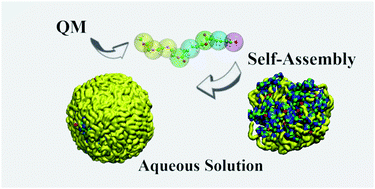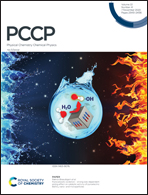A coarse-grain force field based on quantum mechanics (CGq FF) for molecular dynamics simulation of poly(ethylene glycol)-block-poly(ε-caprolactone) (PEG-b-PCL) micelles†
Abstract
In order to provide the means to predict from molecular dynamics (MD) simulations the structures of copolymer-based micelles in solution, we developed coarse grain force field (CGq FF) parameters for poly(ethylene glycol) (PEG) and for poly(ε-caprolactone) (PCL). A key advance here is the use of quantum mechanics to train the parameters describing the non-bonded (NB) interactions between the CG beads. The functional forms are the same as the MARTINI CG FF so standard MD codes can be used. Our CGq FF describes well the experimentally observed properties for the polymer–air and polymer–water interfaces, indicating the accuracy of the NB interactions. The structural properties (density, radius of gyration (Rg), and end-to-end distance (h)) match both experiment and all atom (AA) simulations. We illustrate the application of this CGq FF by following the formation of a spherical micelle from 250 chains of PEG23-b-PCL9 diblock copolymer, each block with molecular weight of 1000 Daltons (10 500 beads, corresponding to 123 250 atoms), in a water box with 119 139 water beads (426 553 water molecules).



 Please wait while we load your content...
Please wait while we load your content...
